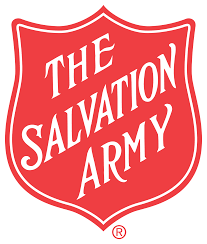






5-Star Service, Trusted & Loved by Hundreds
Your Appraiser Search Ends Here
Your Appraiser Search Ends Here
.avif)

Nationwide Coverage – Appraisals Anywhere in the US

Get it done Onsite or Online

Any Asset, Covered

Defensible for Any Purpose
Frequently Asked
Questions
No Frequently Asked Questions Found.
An independent appraisal provides an objective, credible valuation that meets strict IRS guidelines. This detailed assessment examines the item's condition, market comparables, and intrinsic characteristics to determine its fair market value. By obtaining a professional evaluation, donors create a robust defense against potential audit scrutiny and ensure they're accurately representing their charitable contributions.
The appraisal serves multiple critical purposes. It helps taxpayers comply with IRS regulations, prevents potential penalties from misreporting, and provides transparency for both donors and receiving charitable organizations. Different types of property—whether artwork, vehicles, real estate, or other significant assets—often require specialized valuation approaches that a qualified appraiser can expertly navigate.
Beyond regulatory compliance, a well-documented appraisal supports the broader mission of charitable giving. It allows non-profit organizations to accurately record and understand the true value of in-kind donations, enhancing their financial reporting and demonstrating the tangible impact of charitable contributions.
Most importantly, a professional appraisal protects the donor's interests. It provides a credible, independent assessment that can withstand potential IRS review, giving taxpayers confidence in their charitable deduction claims. By investing in a thorough, professional valuation, donors can ensure their generosity is both recognized and properly documented.
An antique artwork appraisal represents a meticulous professional evaluation of historically significant artworks, typically created over a century ago. This comprehensive assessment goes beyond simple price determination, delving into the intricate layers that define an artwork's true value and cultural importance.
The process involves a nuanced examination of multiple critical factors. Experts carefully analyze the artwork's authenticity, scrutinizing intricate details that distinguish genuine pieces from replicas. Provenance tracking becomes paramount, tracing the artwork's ownership history to establish its unique narrative and potential historical significance.
Condition assessment plays a crucial role in the appraisal, with professionals examining every aspect of the artwork's physical state. They evaluate potential restoration work, assess preservation quality, and document any wear or potential damage that might impact the piece's overall value.
Market dynamics form another essential component of the appraisal. Appraisers remain attuned to current art market trends, recent auction results, and shifting collector interests that can dramatically influence an artwork's monetary worth. They apply sophisticated comparative analysis techniques, examining similar pieces to contextualize the artwork's potential market value.
Beyond monetary considerations, these appraisals offer deeper insights into an artwork's artistic and cultural significance. Experts explore the piece's historical context, artistic movement, and potential influence, providing a comprehensive understanding that transcends mere financial evaluation.
The ultimate goal of an antique artwork appraisal is to deliver a precise, well-researched assessment that serves multiple purposes—from insurance documentation and estate planning to potential sale or donation. It represents a critical tool for collectors, museums, and art enthusiasts seeking to understand and preserve cultural heritage.
Digital antique artwork appraisals have revolutionized the valuation process, offering art enthusiasts and collectors a convenient and professional method for assessing valuable pieces. Modern online appraisal techniques leverage advanced technology to provide accurate and comprehensive evaluations without requiring physical presence.
Professionals typically conduct these assessments through high-resolution photographs, detailed descriptions, and comprehensive provenance documentation submitted electronically. This approach allows expert appraisers to carefully examine an artwork's condition, historical significance, and potential market value with remarkable precision.
Interactive online appraisal sessions have emerged as an innovative option for those seeking more dynamic assessments. Using video conferencing platforms, appraisers can engage directly with clients, enabling real-time examination of intricate details, textures, and potential areas of interest that static images might not fully capture.
The digital appraisal process offers significant advantages, including flexibility, time efficiency, and accessibility. Clients can receive professional insights from the comfort of their home, eliminating geographical constraints and streamlining the valuation experience. Whether preparing for sale, insurance, or personal knowledge, online artwork appraisals provide a sophisticated and reliable solution for understanding the true value of antique art pieces.
Antique artwork appraisers represent specialized professionals who offer nuanced expertise across diverse art categories. These professionals bring unique skill sets tailored to specific art domains, ensuring comprehensive and accurate valuation of historical and collectible pieces.
Fine art appraisers concentrate on high-value artworks like paintings, sculptures, and limited edition prints. They leverage deep art historical knowledge, understanding complex market dynamics and artistic movements. Their expertise proves critical for evaluating works from renowned artists and significant artistic periods.
Decorative arts appraisers focus on functional and aesthetic objects beyond traditional fine art. Their evaluations encompass ceramics, furniture, textiles, and glassware, considering both aesthetic qualities and historical significance. These professionals possess broad knowledge spanning multiple decorative styles and historical periods.
Regional art appraisers specialize in artwork representing specific cultural and geographical contexts. They understand local artistic traditions, materials, and techniques that might escape generalist appraisers. Their insights prove invaluable for artworks with localized significance that may not have broader market recognition.
Restoration and conservation experts, while not traditional appraisers, play a crucial role in artwork valuation. They assess physical condition, potential restoration needs, and factors that might impact market value. Their technical understanding helps collectors and owners make informed preservation decisions.
Historical art appraisers delve into pieces with significant contextual importance. They integrate historical research with valuation techniques, providing deeper insights into artworks connected to specific events, cultures, or influential figures. Their approach transforms artwork evaluation from mere monetary assessment to comprehensive cultural interpretation.
Each appraiser type brings distinct perspectives, ensuring comprehensive and nuanced artwork valuation across different domains and artistic expressions.
Understanding the value of antique artwork extends far beyond simple price estimation. Professional appraisals serve critical functions across multiple domains, providing comprehensive insights that protect and inform art collectors and owners.
Insurance protection represents a primary motivation for obtaining an artwork appraisal. Accurate valuations ensure comprehensive coverage, enabling owners to receive appropriate compensation in cases of theft, damage, or loss. A precise, current appraisal becomes a crucial document that streamlines potential insurance claims and safeguards significant financial investments.
Tax considerations also underscore the importance of professional artwork appraisals. When donating pieces valued over specific thresholds, certified appraisals become essential for claiming legitimate tax deductions. These professional assessments provide authoritative documentation that substantiates fair market value, helping collectors navigate complex IRS regulations while maximizing potential tax benefits.
Estate planning represents another critical context where artwork appraisals prove indispensable. Executors rely on precise valuations to facilitate equitable asset distribution, particularly when managing complex inheritance scenarios. Comprehensive appraisals help prevent potential disputes among heirs by providing transparent, professional assessments of artwork values.
Provenance analysis during appraisals can dramatically influence an artwork's market value. Professional evaluators examine an item's historical ownership, artistic significance, and contextual background, offering insights that extend well beyond monetary worth. These nuanced assessments can reveal hidden historical value and potential future appreciation.
Strategic decision-making also benefits substantially from professional artwork appraisals. Collectors gain valuable market intelligence that informs potential purchasing, selling, or investment strategies. In a dynamic art market, these expert evaluations provide critical context for understanding current trends and potential future value trajectories.
Ultimately, professional artwork appraisals serve as comprehensive tools for risk management, financial planning, and cultural preservation. By providing authoritative, multi-dimensional assessments, they empower art owners to make informed decisions that protect and maximize their valuable collections.
Understanding IRS Form 8283
IRS Form 8283, also known as the 'Noncash Charitable Contributions' form, is an essential document for taxpayers wishing to claim deductions for the donation of tangible personal property, including antique artwork. This form is required when the total deduction for noncash contributions exceeds $500. Individuals must provide detailed information about the donated item, including its description, fair market value, and the method used to determine that value. Ensuring a proper appraisal is vital to substantiate the charitable contribution and comply with IRS regulations.
The fair market value of antique artwork is not merely a reflection of its purchase price or sentimental value; it is defined as the price that a willing buyer would pay a willing seller in an arm's-length transaction. Therefore, obtaining a qualified appraisal from a certified appraiser is key to determining this value accurately. The appraiser will consider various factors, including the artist's reputation, historical significance, rarity, and the condition of the artwork. A thorough appraisal not only contributes to an accurate Form 8283 but also provides peace of mind that the claimed value is substantiated by expert evaluation.
Documentation is crucial when submitting Form 8283, and it is important for taxpayers to retain copies of both the appraisal report and the form itself for their tax records. In addition to the completed form, if the individual intends to claim a deduction of over $5,000 for the antique artwork, the IRS requires a qualified appraiser to sign Part III of Form 8283. This additional step serves as a seal of authenticity for the appraisal, ensuring that the claimed value holds up under IRS scrutiny. Proper understanding and execution of the requirements surrounding Form 8283 can ensure a smoother experience during the donation process and mitigate the risk of an audit.
Definition of Antique Artwork
Antique artwork is typically defined as decorative or fine art that is at least 100 years old. This category includes paintings, sculptures, prints, and other forms of artistic expression created by skilled artisans or famous artists. The age of the artwork, along with its historical context and provenance, plays a crucial role in determining its classification as an antique. Such pieces often reflect significant cultural, artistic, and historical movements, making them valuable not only for their aesthetic appeal but also for their contribution to art history.
When assessing antique artwork, various factors come into play, including the materials used, the artist's reputation, and the artwork's condition. The originality and authenticity of the piece are paramount; reproductions or altered works may not qualify as antiques despite their age. Collectors and appraisers also pay close attention to the art's style, rarity, and market demand, as these elements greatly influence its valuation. Understanding these factors helps potential buyers and sellers navigate the complexities of antique artwork.
For individuals looking to claim deductions for charitable donations or estate settlements involving antique artworks on IRS Form 8283, accurate appraisals are essential. The IRS requires that the appraisal is conducted by a qualified appraiser who adheres to industry standards and guidelines, ensuring the artwork is properly classified and valued. Proper documentation and expert insight into the piece’s significance can provide not only a legal safeguard but also enhance the potential tax benefits associated with its appraisal. Having a clear grasp of what constitutes antique artwork is vital for anyone engaging in transactions or donation processes involving these exquisite pieces.
Importance of Appraisals for Tax Deductions
When it comes to claiming tax deductions for donated or purchased antique artworks, obtaining a professional appraisal is crucial. The IRS mandates that taxpayers use qualified appraisals to establish the fair market value of art items, especially for high-value pieces. Without an accurate appraisal, individuals risk facing penalties or disallowances if their valuation is challenged during an audit.
An appraisal serves not only to validate the artwork's value but also to provide essential details about its provenance, condition, and significance. This documentation becomes invaluable when filling out IRS Form 8283, which is required for filing charitable deductions of non-cash contributions exceeding $500. By presenting a well-documented appraisal report, taxpayers can support their claims and bolster their credibility with the IRS.
Moreover, the art market is dynamic, and values fluctuate based on various factors like shifts in trends or economic conditions. Regular appraisals can help collectors and donors remain informed about their artworks' current market value. This awareness not only aids in financial planning but also ensures compliance with IRS requirements, safeguarding individuals against potential disputes over valuations in the future.
Who Can Conduct an Antique Artwork Appraisal?
Antique artwork appraisals should be conducted by qualified professionals who possess a deep understanding of art history, market trends, and specific valuation methods for antiques. Certified appraisers often have credentials from recognized appraisal organizations, demonstrating their expertise and commitment to ethical standards in valuation. These professionals are well-versed in the nuances that distinguish an antique piece from contemporary art, including elements such as provenance, condition, and style, which significantly influence an artwork's value.
In addition to certification, experience in the specific type of artwork being appraised can greatly enhance the accuracy of an appraisal. For example, an appraiser specializing in oil paintings may have a different set of skills compared to one focused on prints or sculptures. It is crucial to select an appraiser with a proven track record in handling antique artwork, as their insights will provide not just a fair market value, but also an understanding of the piece's significance in the broader art market.
Key Factors Affecting the Value of Antique Artwork
When assessing the value of antique artwork, several key factors come into play that can significantly influence its worth. The artist's reputation is paramount; works by renowned artists often fetch higher prices due to their historical significance and demand in the market. Additionally, the rarity of the artwork—coupled with its provenance or documented history of ownership—can enhance its value, particularly if it has a unique story or connection to a notable figure or event.
Condition and quality are also critical in determining the value of antique artwork. Factors such as fading, damage, or restoration can impact not just the aesthetic appeal but also the market value of the piece. Furthermore, the medium and style of the artwork, whether it's an oil painting, sculpture, or mixed media, can appeal to different collectors, thus influencing potential offers. Understanding these elements is essential for a comprehensive antique artwork appraisal, especially when preparing for IRS Form 8283.
The Appraisal Process: What to Expect
The appraisal process for antique artwork typically begins with the selection of a qualified appraiser who possesses expertise in the specific category of art in question. The appraiser will examine the piece thoroughly, assessing elements such as its condition, provenance, and historical relevance. They may also conduct research to verify the artist’s authenticity and gather information on similar sales to establish the artwork's market value. This critical stage ensures that the appraisal reflects both the item's uniqueness and its current market standing.
Once the detailed examination is completed, the appraiser compiles their findings into a formal appraisal report. This report not only includes the estimated value of the artwork but also factors in its significance, condition, and any relevant market trends that may impact its appraisal. For IRS Form 8283 purposes, this documentation is crucial, as it provides the necessary justification for any deductions claimed for charitable contributions or estate tax purposes. Understanding this process can help individuals navigate the complexities of valuing their antique artwork while ensuring compliance with tax regulations.
Documentation Required for an Antique Artwork Appraisal
When preparing for an antique artwork appraisal, proper documentation is essential to ensure the appraiser has all the necessary information to evaluate the piece accurately. This includes provenance records, which trace the artwork's history and ownership, as well as any previous appraisals, purchase receipts, or auction catalogs. Providing clear and detailed documentation can help appraisers understand the artwork’s significance, authenticity, and market value in the context of the current art market.
Another critical aspect of documentation includes descriptions of the artwork itself, such as its dimensions, materials, and techniques used in its creation. High-quality photographs should accompany the written descriptions to illustrate the artwork's condition and details. Images that capture the artwork from various angles, as well as close-ups of the signature, frame, or any unique features, are invaluable in informing the appraisal process and establishing a comprehensive understanding of the piece.
It's also advisable to gather any relevant historical context that might impact the value of the artwork. This could include background information about the artist, important exhibitions, or significant sales of similar works. By compiling thorough documentation, collectors can facilitate a more accurate appraisal, which is crucial not only for IRS Form 8283 reporting but also for insurance purposes and estate planning.
Common Challenges in Antique Artwork Appraisals
Antique artwork appraisals present unique challenges that both appraisers and property owners must navigate. One primary challenge is the subjective nature of valuing art, particularly when it comes to distinguishing between authentic pieces and reproductions or fakes. This requires a keen understanding of art history, trends in the market, and the specific qualities that determine an artwork's value. Without this expertise, there is a heightened risk of over or undervaluing an item, which can lead to discrepancies in tax reporting or potential financial loss during a sale.
Moreover, antique artworks often come with complex provenance, or the history of ownership, which can complicate the appraisal process. Establishing a clear and documented lineage is crucial for verifying authenticity and supporting an artwork's market value. Lack of documentation or incomplete records can diminish the perceived value and make it harder to accurately assess an item for IRS Form 8283 submissions. It is essential for property owners to collaborate closely with experienced appraisers who understand these nuances to mitigate potential issues and ensure a fair valuation.
The Role of Market Trends in Valuation
Understanding market trends is crucial when appraising antique artwork for IRS Form 8283. The value of artwork can fluctuate significantly based on various factors, including public interest, auction results, and economic conditions. Staying informed about these trends allows appraisers to determine a more accurate valuation, reflecting what collectors and investors are willing to pay at any given time. Additionally, trends can reveal shifts in preferences toward specific artists, styles, or periods, which can heavily influence the market worth of a piece.
When assessing the value of antique artwork, appraisers should consider both historical significance and current market demand. For example, an artist may have been highly regarded in their time, yet their work's value might diminish if trends shift towards more contemporary pieces. Conversely, a declining artist’s reputation could experience resurgence due to renewed interest, altering valuation expectations. By analyzing these patterns alongside comparable sales, appraisers can provide a well-rounded and informed appraisal that aligns with IRS standards.
How to Choose a Qualified Appraiser
{object}
{object}
{object}
Understanding the Appraisal Report and Its Components
When preparing for an IRS Form 8283, understanding the appraisal report is crucial. An appraisal report provides a detailed analysis of an antique artwork, including its condition, provenance, and market value. Appraisers consider various factors such as the artist's reputation, historical significance, and current market trends to establish an accurate valuation. It is essential for this report to be comprehensive and compliant with IRS standards to ensure that the appraisal will hold up under scrutiny during tax filings.
The components of the appraisal report typically include a description of the artwork, an analysis of its attributes, and supporting documentation that reinforces the appraisal’s conclusions. Additionally, appraisers often include comparable sales data to contextualize the value determined, which can be particularly beneficial for unique pieces that have limited market activity. Understanding these elements can help collectors and donors appreciate the thoroughness required in the appraisal process, ultimately ensuring confidence in the information presented on IRS Form 8283.
Conclusion: Importance of Accurate Appraisals for Tax Purposes
Accurate appraisals of antique artwork are crucial when it comes to fulfilling tax obligations, especially when reporting donations or other transfers of ownership on IRS Form 8283. This form requires detailed information regarding the fair market value of the artwork, and a precise appraisal ensures that taxpayers are compliant with IRS regulations. Inaccurate valuations can lead to issues ranging from penalties for underreporting to the denial of deductions claimed on tax returns.
The importance of obtaining a professional appraisal cannot be overstated, particularly for artworks that may carry substantial value. Professional appraisers have the expertise to assess various factors, including the artist’s reputation, the condition of the piece, and recent sales of comparable works in the market. This level of analysis not only contributes to a fair market value, but also provides documentation that can support your position in case of an IRS inquiry.
Moreover, accurate appraisals serve a dual purpose: they not only uphold tax compliance but also protect the taxpayer’s financial interests. By working with qualified appraisers, individuals can ensure that their valuable antique artworks are correctly represented, which is essential for estate planning, insurance coverage, and potential future sales. Ultimately, understanding the nuances of antique artwork appraisals can facilitate informed decision-making and safeguard assets for the future.
View all Locations
BEST-IN-CLASS APPRAISERS, CREDENTIALED BY:






.svg)










